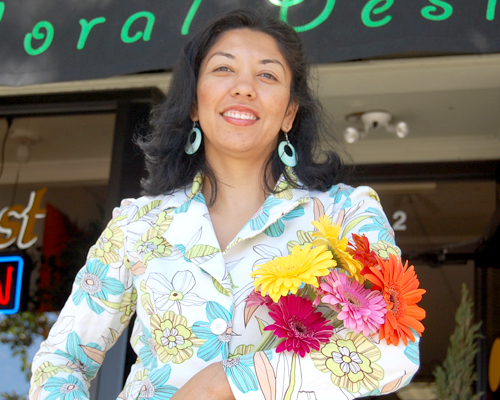
Immigrant women entrepreneurs are driving a business revolution in every region of the United States, according to a new report by the Immigration Policy Center. In 2010, 40 percent of all immigrant business owners were women-1,451,091 immigrant men and 980,575 immigrant women. That same year, 20 percent of all women business owners were foreign-born.
The report, Our American Immigrant Entrepreneurs: The Women, points to a large increase in immigrant women’s entrepreneurship rates between 2000 and 2010. Immigrant and native‐born women’s business‐ownership rates were roughly equivalent in 2000, at 5 percent of women who were employed for each group. By 2010, according to the American Community Survey, immigrant women’s entrepreneurship rates had grown to more than 9 percent, while the native‐born women’s rate grew to 6.5 percent.
"This report is the result of our research into that less-visible population that is starting various enterprises every day report," says Susan Pearce, author of the report. "Not only does the image of a woman not come to mind when one hears the word "immigrant," but their particular experiences are under-represented in reports on immigration."
Among the success stories referenced in the report are two about Hispanic business owners. Yolanda Voss, president of her own fashion‐design studio and showroom migrated from Ecuador with the dream of becoming a fashion designer. She immediately began taking courses in her field and establishing apprenticeships with mentors whom she admired.
"I came to the land of my dreams in 1962 and my goal was to become a prominent designer," says Voss, who incorporated Yolanda Voss Studio International in 1980 and opened Yolanda Voss Fashion Gallery in 1991. "The latest recession has affected our market, but I remind myself that effort, dedication and the incorporation of new ideas will bring a return to prosperity," says Voss, who offers, internships and lectures to inspire the creative spirit of new designers.
Maria Sobrino began her entrepreneurial life in the travel business in Mexico. After expanding the business to Los Angeles, however, the Mexican peso collapsed. She looked around in the United States and noticed the absence of a particular comfort food that Mexican children enjoyed three times a day: flavored gelatins, or gelatinas. Sobrino began experimenting with samples, and her friends encouraged her to produce them and to name the business Lulu, which is her nickname. She remembered, “Whatever you do, you need to love it. . . . Do you know how many people laughed at my idea of having gelatinas and selling them with a little jar three hundred cups a day that I was doing?
Today Sobrino’s company, Lulu’s Desserts, sells about fifty million cups a year of gelatin, which are distributed to supermarkets. The company operates a factory and employs teams of employees to manage production, marketing, sales, and delivery. Sobrino has also written a book highlighting the stories of Latina entrepreneurs to inspire others.
